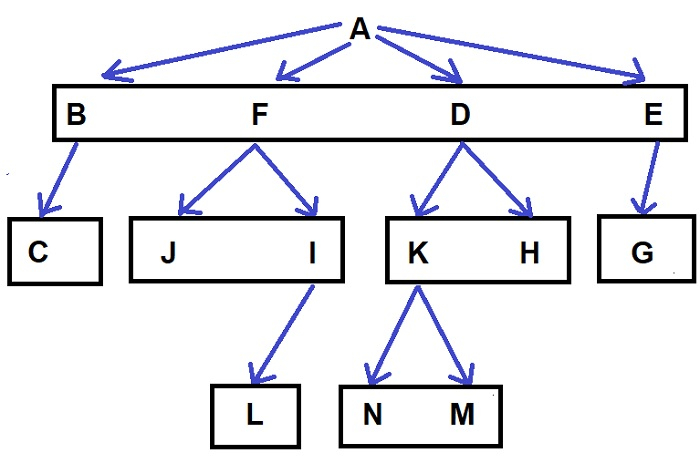
 Data Structure
Data Structure Networking
Networking RDBMS
RDBMS Operating System
Operating System Java
Java MS Excel
MS Excel iOS
iOS HTML
HTML CSS
CSS Android
Android Python
Python C Programming
C Programming C++
C++ C#
C# MongoDB
MongoDB MySQL
MySQL Javascript
Javascript PHP
PHPPhysics
Chemistry
Biology
Mathematics
English
Economics
Psychology
Social Studies
Fashion Studies
Legal Studies
- Selected Reading
- UPSC IAS Exams Notes
- Developer's Best Practices
- Questions and Answers
- Effective Resume Writing
- HR Interview Questions
- Computer Glossary
- Who is Who
Find the Number of Ways to Traverse an N-ary Tree using C++
Given an N-ary tree and we are tasked to find the total number of ways to traverse this tree, for example −

For the above tree, our output will be 192.
For this problem, we need to have some knowledge about combinatorics. Now in this problem, we simply need to check all the possible combinations for every path and that will give us our answer.
Approach to Find the Solution
In this approach, we simply need to perform a level order traversal and check the number of children each node has and then simply multiply its factorial to the answer.
Example
C++ Code for the Above Approach
#include<bits/stdc++.h>
using namespace std;
struct Node{ // structure of our node
char key;
vector<Node *> child;
};
Node *createNode(int key){ // function to initialize a new node
Node *temp = new Node;
temp->key = key;
return temp;
}
long long fact(int n){
if(n <= 1)
return 1;
return n * fact(n-1);
}
int main(){
Node *root = createNode('A');
(root->child).push_back(createNode('B'));
(root->child).push_back(createNode('F'));
(root->child).push_back(createNode('D'));
(root->child).push_back(createNode('E'));
(root->child[2]->child).push_back(createNode('K'));
(root->child[1]->child).push_back(createNode('J'));
(root->child[3]->child).push_back(createNode('G'));
(root->child[0]->child).push_back(createNode('C'));
(root->child[2]->child).push_back(createNode('H'));
(root->child[1]->child).push_back(createNode('I'));
(root->child[2]->child[0]->child).push_back(createNode('N'));
(root->child[2]->child[0]->child).push_back(createNode('M'));
(root->child[1]->child[1]->child).push_back(createNode('L'));
queue<Node*> q;
q.push(root);
long long ans = 1;
while(!q.empty()){
auto z = q.front();
q.pop();
ans *= fact(z -> child.size());
cout << z->child.size() << " ";
for(auto x : z -> child)
q.push(x);
}
cout << ans << "\n";
return 0;
}Output
4 1 2 2 1 0 0 1 2 0 0 0 0 0 192
Explanation of the Above Code
In this approach, we apply BFS(Breadth-First Search) or level order traversal and check the number of children each node has. Then, multiply the factorial of that number to our answer.
Conclusion
This tutorial finds several ways to traverse N-ary tree combinatorics and by applying BFS. We also learned the C++ program for this problem and the complete approach we solved.
We can write the same program in other languages such as C, java, python, and other languages. We hope you find this tutorial helpful.

